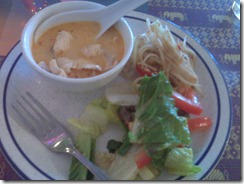This past quarter, I took a Public Health Nutrition and Biology class, in which we focused on various subjects related to nutrition and its association with public health, as well as how it could affect our biology over the course of a lifetime. One of the lectures dealt with pregnancy, breastfeeding, and nutrition. We spent three hours talking about mother and baby issues. Many new mothers (and not-so-new mothers) are not in the loop about information pertinent to the health of their newborns. What a mother does (and doesn’t do) can have an effect on multiple generations. For this reason, it is important to provide education to mothers. For example, many assume that breastfeeding is instinctive, but the reality is that mothers need training on properly feeding their babies.
This particular lecture reminded me of some of the traditional practices that my mother was taught about how a newborn should be treated during the first few months. I want to mention each oral tradition and talk about its relevance to modern science.
1) When you are pregnant, eat a variety of foods.
In this particular class, we learned that there should be an increase in body weight during a normal pregnancy. Pregnancy is not the time to go on a diet. Even before getting pregnant, folic acid from dark, green leafy vegetables (think: spinach) are a must. While you are pregnant, you should be eating nutrient-dense foods and getting your nutrients from a mixed source of vegetables, fruits, and grains.

Interesting fact: Did you know that the habits, behaviors, and health of the mom during pregnancy has the potential to influence health for generations to come? Children born to a mother while she was pregnant during a period of starvation will have a higher chance of becoming obese in their adult years. Similarly, mothers that are either overweight or obese when they are pregnant increase the chance that their baby will be overweight in his/her life as well.
2) Keep your bundle of joy bundled up.
I think my grandmother aggressively emphasized the importance of keeping the baby warm and it is definitely something to keep in mind. However, make sure that you are not overheating the baby. I read somewhere recently that the baby’s temperature should be between 16 and 20 degrees Celsius. You should buy a thermometer and diligently check if your baby might be overheated. Apart from warm clothes, it might be good to invest in cute baby hats.
3) Breast milk is the best milk.
I think we might have spent close to an hour or so talking about the benefits of breastfeeding. Our professor pointed out that breast milk is the cheapest, eco-friendliest, and most nutritious milk for babies. It provides the necessary nutrients as well as antibodies. I had a friend that decided to go the baby formula route because she said that her baby looked too thin. She was only 19 at the time so she did not have much education on baby basics. Breast milk provides the right amount of nutrients and energy for the baby. There is no need to use formula milk and it could in fact hurt the baby in the long-term.
It can be a daunting task to be a new mother, but a rewarding experience as well. Make sure you consult with your doctor or nurse about practices that are safe as well as healthy for your baby. If you have friends that are pregnant or new mothers, share well-researched information with them and encourage them to visit their primary care practitioner.









